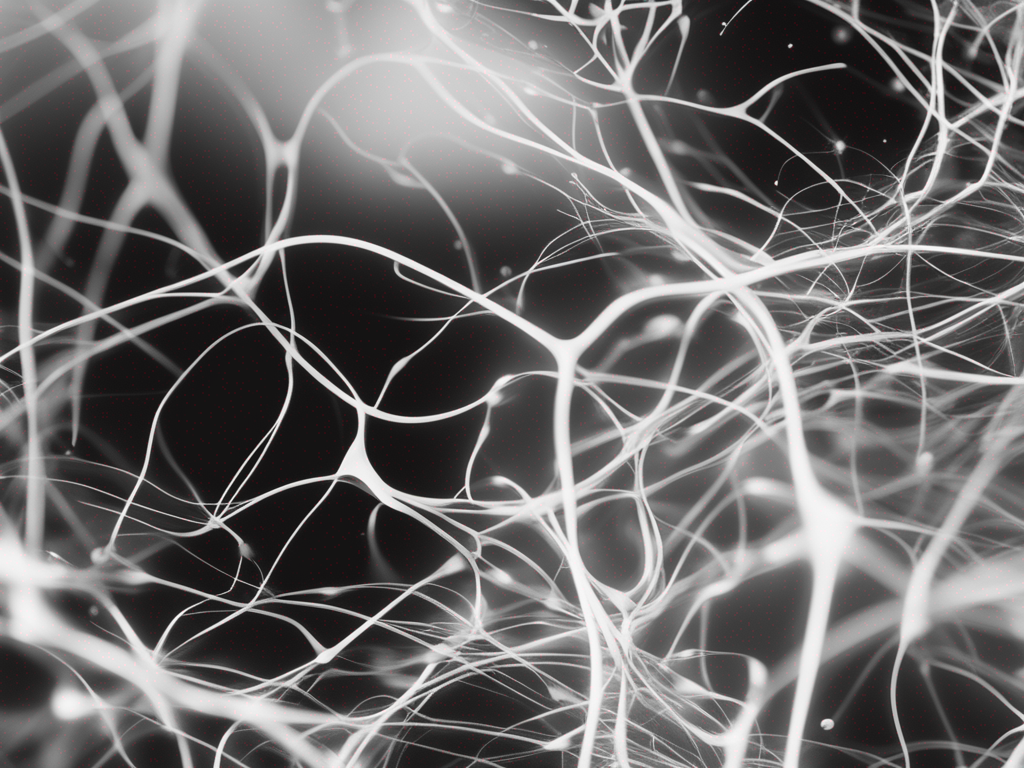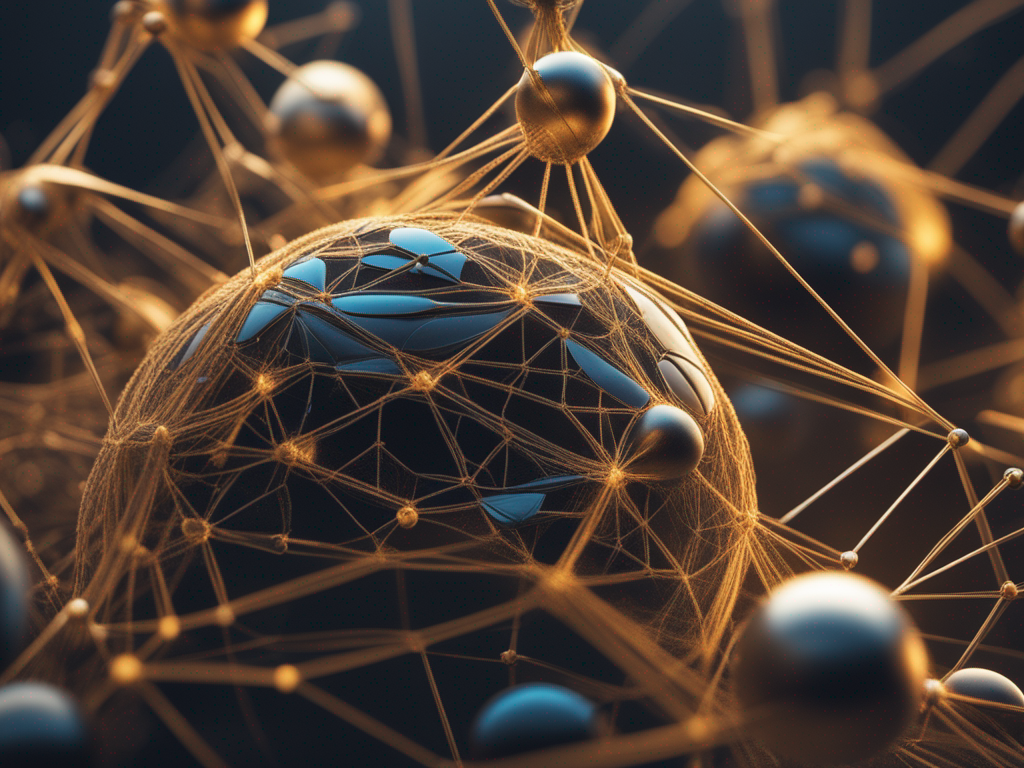Welcome to today’s deep-dive into the cutting-edge world of tech research. We’re unpacking studies on everything from the mysterious inactive neurons in large language models, to the precision of FPGA-based emulators for system software. We’ll explore criticisms of overfitting in Graph Neural Networks and marvel at astrophotonics’ potential to detect extraterrestrial life. Lastly, we’ll delve into the magic behind FreeU’s method that improves image generation without extra training. As always, we’re not just exploring the papers themselves, but also the lively debates and discussions they’ve sparked on Hacker News. Buckle up, it’s time to dive in!
Top Papers
1) Neurons in Large Language Models Dead N-gram Positional
Summary:
The analysis reveals that the initial part of the network in large language models is sparse, with numerous inactive neurons.
View PDF | Chat with this paper
Copy slides outline
Copy embed code
Download as Word
Neurons in Large Language Models: Uncovering the Secrets of Activation Patterns
Source: arxiv.org - PDF - 8,257 words - view
"Large language models (LLMs) have sparse activation patterns"
• Many neurons in the early part of the network are “dead”
• This sparsity is evident in LLMs, particularly in the OPT family of models
• Sparse activation patterns challenge traditional views of neural networks
"Positional neurons in FFN layers defy conventional understanding"
• These neurons do not align with the key-value memory view
• They can be used in unconventional ways within the network
• Their role in LLMs is still not fully understood
"Dedicated neurons and the challenge of semantic concepts"
• Larger LLMs have dedicated neurons for certain features
• However, the space of fine-grained semantic concepts exceeds available neurons
• This poses a limitation in effectively representing all possible concepts
"Token-detecting neurons enable comprehensive coverage"
• Token-detecting neurons exhibit ensemble-like behavior
• They cover different tokens in different layers, allowing for wide coverage
• This behavior is observed in larger LLMs and supports effective token detection
"Unveiling dead neurons and positional information"
• Dead neurons in LLMs play a role in encoding token position
• The top suppressed concepts trigger these neurons
• Vector updates for these neurons point towards next token candidates
"Positional neurons encode absolute position accurately"
• Positional neurons can accurately encode absolute position without positional encoding
• Some positional neurons exhibit extreme activation values (0 or 1) based solely on position
• Oscillatory patterns may emerge with longer training time
"Neurons as fundamental units of analysis"
• Neurons have been extensively studied in various neural network models
• Initial focus was on convolutional networks for images and text classifiers
• Similar findings of n-gram detectors have been observed in small convolutional text classifiers
"References for further exploration"
• This document provides a list of references for related papers and datasets
• Key papers include “Adaptively Scaling Laws for Neural Language Models” and “Impact of Positional Encoding on Length Generalization in Transformers”
• These references offer deeper insights into the field of neural language models
"Uncovering the Secrets of Neurons in LLMs"
• The activation patterns of neurons in LLMs are sparse, with many “dead” neurons
• Positional neurons challenge traditional views and encode valuable information
• Further research is needed to fully understand the behavior and potential of neurons in LLMs
Hacker News:
Researchers study how artificial neural networks process data by analyzing linguistic concepts, with a focus on the influence of early learning phases on network flexibility. View on HN
- Neurons in large language models, such as artificial neural networks, are being studied to understand their inner workings.
- Researchers have made progress in understanding how artificial neural networks process input data through concepts like linguistics and parsing.
- Trained artificial neural networks can be reduced to a single mathematical formula for future use, without relying on the actual network.
- Dead neurons in neural networks can be pruned to reduce model size and improve efficiency.
- There is ongoing research on automating the pruning and parameter selection process in neural networks to optimize their performance.
- The complexity of large language models like GPT-3 is still significantly lower than that of the human brain, but progress is being made.
- Chatbots and AI models currently lack the ability to accurately perform certain tasks, such as precise calculations or exact database work, which require logic and precision.
- The future of AI lies in combining different models and approaches to mimic different aspects of human intelligence, such as vision, language, and movement.

2) FPGA-based Main Memory Emulator for System Software
Summary:
The paper introduces METICULOUS, an FPGA-based emulator that accurately reproduces latency, bandwidth, and bit-flip errors, enabling the study of system software with hybrid main memory systems.
View PDF | Chat with this paper
Copy slides outline
Copy embed code
Download as Word
FPGA-based Main Memory Emulator: METICULOUS
Source: arxiv.org - PDF - 10,938 words - view
Introduction
• An FPGA-based main memory emulator for system software studies
• Emulates main memory with multiple memory regions
• Accurately replicates latency, bandwidth, and bit-flip errors
Modular Design
• Highly modular design for future extensibility
• Consists of a CPU, rate controller, and memory controller
• Connected via the AXI bus
Visual: Diagram showcasing the modular design
Bandwidth Throttling and Error Injection
• Uses token bucket algorithm for bandwidth throttling
• Employs linear feedback shift register for error injection
• Provides precise control over memory performance
Utilizing Memory Regions
• Users can utilize memory regions through the NVDIMM driver
• Automatic attachment of Linux pmem driver during boot
• Creation of namespaces for each physical memory region
CPU Cache Control
• Modification of /dev/mem driver to enable/disable CPU cache
• Works in conjunction with the CPU cache mechanism of existing CPU cores
• Enables evaluation of the impact on system performance
Low Latency and Tradeoffs
• Minimum latency of 400 ns
• Larger than CPU-side DRAM latency
• Allows exploration of memory subsystem designs and tradeoffs
References
• List of references related to FPGA-based main memory emulation for system software
• Covers emerging non-volatile solid-state memories
• Includes research papers and conference proceedings
Key Takeaways
• FPGA-based main memory emulator for system software studies
• Emulates main memory with multiple regions and replicates errors accurately
• Modular design for extensibility and cost-effectiveness
• Bandwidth throttling and error injection capabilities
• Utilization of memory regions and CPU cache control
• Facilitates exploration of memory subsystem designs and tradeoffs
Note: The presentation can be expanded or condensed based on the desired length and level of detail. Visuals can be added to enhance understanding and engagement.

3) Graph Neural Networks for Non-Informative Graph Structures
Summary:
The study investigates whether Graph Neural Networks can ignore irrelevant graph structures and proposes solutions to tackle this problem.
View PDF | Chat with this paper
Copy slides outline
Copy embed code
Download as Word
Graph Neural Networks for Non-Informative Graph Structures
Source: arxiv.org - PDF - 10,258 words - view
Graph Neural Networks (GNNs) in Various Domains
• GNNs have become the dominant approach for learning on graph data.
• They have been widely used in various domains.
• GNNs offer powerful capabilities for analyzing complex graph structures.
GNNs and Non-Informative Graph Structures
• It is unclear if GNNs can effectively ignore non-informative graph structures.
• Non-informative graph structures can lead to overfitting.
• Overfitting can hinder the performance and generalization of GNNs.
Overfitting of Graph Structures
• GNNs tend to overfit graph structures that should be ignored.
• This can result in biased predictions and inaccurate analysis.
• Overfitting of graph structures needs to be addressed for better performance.
Introducing Reduced COV (R-COV)
• R-COV is a method to reduce the coefficient of variation in graphs.
• It makes graph structures more similar to regular graphs.
• R-COV helps improve the performance of GNNs on non-informative graphs.
Improved Performance with R-COV
• When given a non-informative graph, GNN performance decreases.
• However, the introduction of R-COV significantly improves performance.
• Even with just three examples, the performance of GNNs trained on informative and non-informative graphs is enhanced.
Analyzing the Implicit Bias of GNNs
• The implicit bias of GNNs is analyzed in this study.
• Methods to mitigate overfitting of graph structures are proposed.
• Understanding the implicit bias helps optimize GNN performance.
Evaluating GNNs on Different Datasets
• Various datasets are used to evaluate GNNs.
• Chemical compound datasets like PROTEINS, ENZYMES, NCI1, and DD are used.
• GNNs are applied to predict enzyme classification and tumor growth inhibition.
Key Takeaways: GNNs and Non-Informative Graph Structures
• GNNs have become the dominant approach for learning on graph data.
• It is important to address the ability of GNNs to ignore non-informative graph structures.
• Overfitting of graph structures can hinder GNN performance.
• The R-COV method improves the performance of GNNs on non-informative graphs.
• Analyzing the implicit bias of GNNs helps optimize their performance.
Enhancing Graph Neural Networks for Better Analysis
• GNNs offer powerful capabilities for analyzing complex graph structures.
• By addressing the challenges of non-informative graph structures, GNN performance can be improved.
• Remember to consider the implicit bias of GNNs and utilize methods like R-COV for better results.
Hacker News:
The text highlights the criticism of using graphs unnecessarily in Graph Neural Networks (GNNs) and focuses on the issue of overfitting and its impact on performance. View on HN
- Graph Neural Networks (GNNs) tend to overfit the graph structure, leading to reduced performance.
- Overfitting in GNNs can be problematic when the graph structure is non-informative or irrelevant to the task.
- Graph rewiring is a common technique used in the GNN community to improve learning.
- Attention layers can be an alternative to graph convolution layers in GNNs, allowing the attention mechanism to learn the useful graph structure.
- Adding more connections in GNNs may not help if the graph is not sparse or not a graph at all.
- Residual connections have been shown to alleviate issues like oversmoothing in GNNs.
- Various techniques and models have been proposed to address overfitting in GNNs, including consensus-based classification, Bayesian approaches, and graphon estimation.
- The Eigen-GNN module integrates the eigenspace of graph structures with GNNs to enhance the preservation of graph structures.

4) Detecting Extraterrestrial Life with Astrophotonics
Summary:
Astrophotonics uses laser frequency comb and wavefront sensing to study exoplanets and enhance high contrast imaging techniques.
View PDF | Chat with this paper
Copy slides outline
Copy embed code
Download as Word
Detecting Extraterrestrial Life with Astrophotonics
Source: arxiv.org - PDF - 5,306 words - view
Astronomers Need New Technical Solutions
• Astronomers studying exoplanets need new technical solutions for understanding planetary formation and types.
• Astrophotonics offers a promising avenue forward for advancing observational astronomy.
Laser Frequency Combs for Precise Measurements
• Laser frequency combs (LFC) are critical for measuring small velocity changes and calibrating instruments over many years.
• LFC emits ultra-stable, uniformly spaced lines that provide spectral calibration.
Advanced High Contrast Imaging Techniques
• Detecting extraterrestrial life on zone planets requires advanced high contrast imaging techniques.
• Wavefront sensing and control are essential for eliminating aberrations and improving contrast.
• Starlight suppression using a coronagraph enhances the ability to detect planets.
Photonic Lanterns for Starlight Suppression
• Photonic lanterns can be used to null starlight while allowing planet light to be coupled.
• A 6 port mode-selective lantern operating at 1550 nm has demonstrated monochromatic and polychromatic null depths.
• Photonic lanterns offer a potential solution for improving contrast in exoplanet imaging.
Exploring Different Architectures for Photonic-based Instruments
• Several architectures are being explored for photonic-based instruments to detect and characterize Earth-like planets around sun-like stars.
• One approach involves using a coronagraph with moderately high contrast and enhancing contrast with photonic components downstream.
Technology Readiness Levels (TRL)
• Laser frequency combs (LFCs) are already widely used at ground-based observatories (TRL 9).
• Nulling and wavefront control technologies range from TRL 2-5, depending on the approach.
• These technologies are advancing but still in development for practical implementation.
Contributions of Research Papers
• Various research papers in astrophotonics contribute to the field.
• Topics include spectral flattening of supercontinua, flattening laser frequency comb spectra, and photonic lanterns.
• These papers provide valuable insights and advancements in astrophotonics.
Advancing Exoplanet Research with Astrophotonics
• Astrophotonics offers new technical solutions for understanding planetary formation and types.
• Laser frequency combs, advanced high contrast imaging techniques, and photonic lanterns are key components.
• By exploring different architectures and advancing technology readiness levels, astrophotonics enhances our ability to detect and characterize Earth-like planets.
[Note: The use of relevant visuals such as images of laser frequency combs, wavefront sensing, and photonic lanterns can enhance the presentation.]
Hacker News:
Astrophotonics employs waveguide structures to enhance spectroscopy and imaging in astronomy, enabling the detection of extraterrestrial life. View on HN
- Astrophotonics is a field that can enhance spectroscopy and imaging in astronomy, including the potential for detecting extraterrestrial life.
- The use of waveguide structures in astrophotonics offers advantages such as utilizing existing materials and not requiring new technology.
- The discussion on Hacker News revolves around the potential for detecting extraterrestrial life using astrophotonics, with mentions of Lee Cronin and Sarah Walker’s work on identifying compounds indicating life.
- The concept of creatures expanding exponentially and the need for an exceptional explanation if this expansion does not occur are mentioned.
- The colonization of space is unlikely to happen soon due to challenges and expenses, raising questions about the eventual extinction of planets and stars.

5) Free Lunch in Diffusion U-Net Improving Generation Quality
Summary:
The authors propose FreeU, a method that improves the quality of diffusion models by analyzing the U-Net architecture and understanding the role of the backbone and skip connections in denoising and high-frequency components.
View PDF | Chat with this paper
Copy slides outline
Copy embed code
Download as Word
Enhancing Diffusion Model Generation Quality with FreeU
Source: arxiv.org - PDF - 5,762 words - view
Introduction
• FreeU method improves generation quality of diffusion models without additional training or parameters
U-Net Architecture and Denoising
• U-Net backbone contributes to denoising in diffusion models
• Understanding the role of skip connections in denoising and high-frequency components
Low-Frequency vs High-Frequency Components
• Low-frequency components represent global structure and characteristics
• High-frequency components contain fine details and are sensitive to noise
Effects of Scaling Factors on Image Quality
• Increasing the scale factor of the backbone improves image quality
• Variations in the scaling factor of skip connections have negligible influence
Integration with State-of-the-Art Methods
• FreeU seamlessly integrates with Stable Diffusion, DreamBooth, ModelScope, and Rerender
• Enhancements observed in image and video synthesis models and specialized downstream applications
Significant Improvements in Synthesized Samples
• FreeU enhances the quality of synthesized samples in various diffusion models
• Improvements observed in image and video synthesis, personalized text-to-image tasks, and relation inversion methods
Simple yet Effective Approach
• FreeU enhances sample quality without increasing computational costs
• Analyzing skip connections and backbone features in diffusion U-Net architectures
Related Papers and Works
• References various papers on improving image quality and text-based image editing with diffusion models
• Includes auto-encoding variational Bayes, multi-concept customization of text-to-image diffusion, decomposed
Conclusion
• FreeU is a powerful method for improving the generation quality of diffusion models
• Enhancements observed in various applications and synthesis tasks
• Remember to consider FreeU as a simple yet effective approach for enhancing sample quality.
Hacker News:
This approach enhances the quality of diffusion images by adjusting skip connections in the decoder stage of a diffusion Unet decoder, without the need for extra training. View on HN
- Skip connection rescaling can improve stable diffusion quality without any additional training.
- Reweighting skip connections in the decoder stage of a diffusion Unet decoder can improve SD image quality and reduce artifacts.
- Reweighting the skip connections involves rescaling the backbone features before concatenation in the decoder.
- The paper discusses how rescaling the backbone features through element-wise multiplication by some scalar improves image quality.
- The concept of reweighting skip connections is explained in the context of improving diffusion quality.





